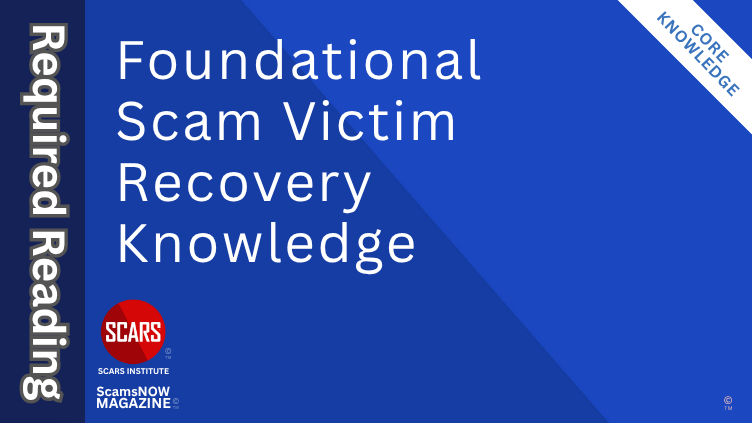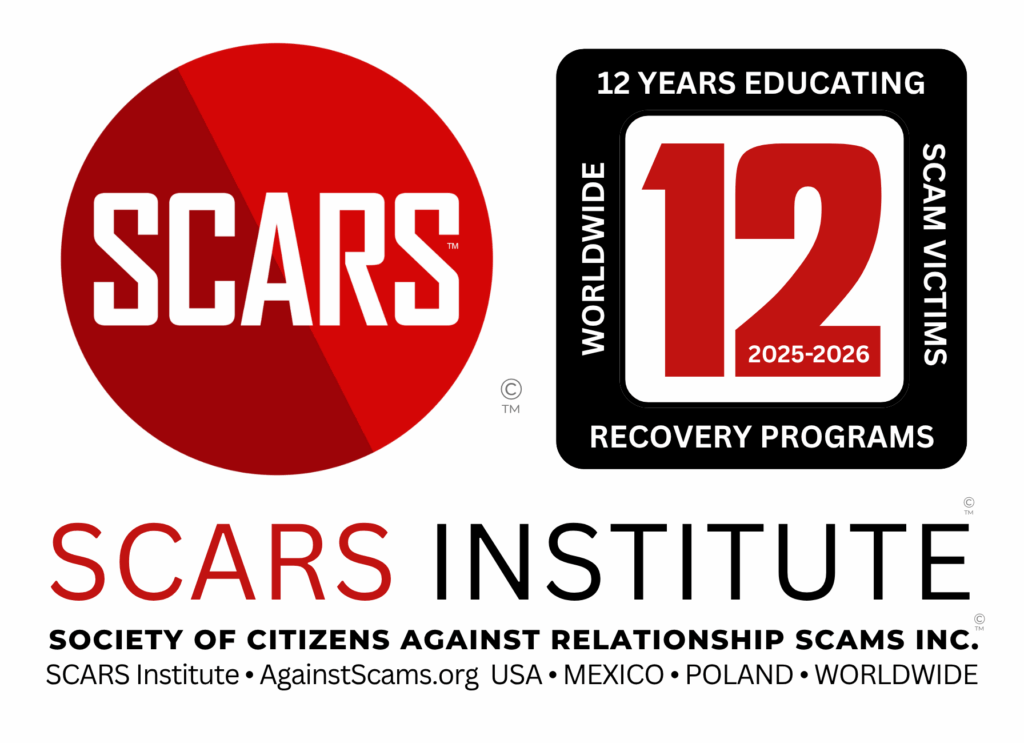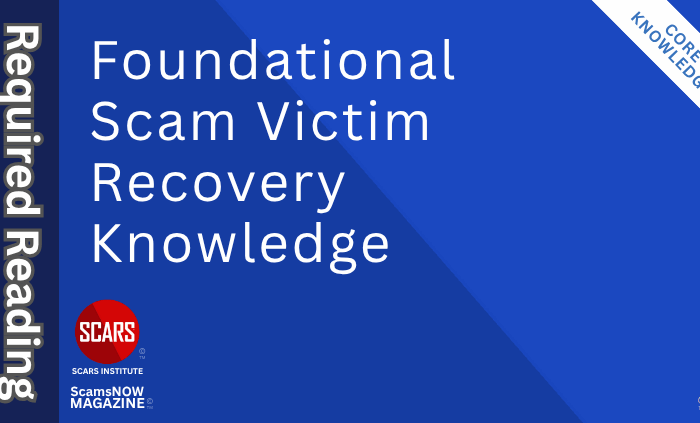
Forgiveness and the 4 Steps to Healing
The Four Basic Steps to Healing: A Journey of Forgiveness and Self-Discovery
Primary Category: Scam Victim Recovery Psychology / Scam Victim Recovery Philosophy
Authors:
• Tim McGuinness, Ph.D., DFin, MCPO, MAnth – Anthropologist, Scientist, Polymath, Director of the Society of Citizens Against Relationship Scams Inc.
• Janina Morcinek – Certified and Licensed Educator, European Regional Director of the Society of Citizens Against Relationship Scams Inc.
Author Biographies Below
About This Article
This is a clear roadmap for personal healing built on four interconnected steps: forgiving parents, forgiving past lovers, forgiving everyone else, and forgiving oneself. It emphasizes that each step may feel difficult but plays a vital role in releasing the emotional weight of old wounds and reshaping personal identity. Through these stages, individuals can understand how family experiences shaped them, how past relationships left imprints, and how external harms continue to influence their inner life. By addressing these influences one by one, readers may find a way to move forward without resentment, shame, or self-blame. The article highlights forgiveness as an act of strength, not submission, and frames it as a necessary practice for living with authenticity and resilience. This framework invites readers to view forgiveness as a powerful tool for personal freedom, emotional balance, and lasting growth.
Note: This article is intended for informational purposes and does not replace professional medical advice. If you are experiencing distress, please consult a qualified mental health professional.

The Four Basic Steps to Healing: A Journey of Forgiveness and Self-Discovery
Forgiveness is not a shortcut. It is a deliberate process that leads to healing when approached with patience and honesty. While many paths to healing exist, four steps tend to emerge in nearly every meaningful recovery. These steps take you through reflection, grief, self-examination, and personal release. Each one may take time, and none guarantees instant peace. Still, each step allows you to reclaim control over your emotional life. These are the four basic steps to healing.
While this article is written for everyone, it especially applies to scam victims. Of course, the scammer/fraudster/criminal is not specified below, but they fall under everyone.
Step 1: Forgiveness Towards Your Parents
Healing often begins by revisiting the earliest influences on your identity. Whether your parents raised you with care, neglect, or contradiction, their impact shaped your view of the world. The first step in your healing is to recognize that they gave you life, and with it, they passed on limitations. Some did the best they could. Others did not. Either way, they had their own histories, traumas, and blind spots. Carrying their shortcomings as your burden will only weigh you down.
Forgiveness toward your parents does not mean forgetting what happened. It does not mean excusing neglect or abuse. It means no longer giving their failings the power to define your worth. You take what they could offer: kindness, lessons, stability, or even resilience in adversity, and leave behind the rest.
This process may surface difficult emotions. You may feel rage, sorrow, longing, or guilt. These feelings are signals that your inner child still seeks recognition. By facing these feelings directly, you begin to unchain yourself from their emotional hold. Releasing that burden frees you to build the life your parents may never have known how to support.
Letting go of what they could not give does not erase your past. It honors your future. And it allows you to begin making choices from the present, not from inherited wounds.
Step 2: Forgiveness Towards Past Lovers
Emotional entanglement and attachment with those you once loved can become one of the strongest anchors in your life. This step asks you to acknowledge relationships that no longer serve you. Some lovers walked away. Others stayed too long. Some betrayed your trust. Still others simply grew apart from who you became.
Holding onto anger or longing for resolution from these relationships often keeps you emotionally trapped. Forgiveness here is not about justifying the harm. It is about releasing your grip on someone who already left. Emotional energy spent revisiting closed doors keeps you from recognizing the doors that now stand open.
Every relationship taught you something. Maybe it revealed what you cannot tolerate. Maybe it showed what love should not look like. Maybe it taught you your own strength, your ability to survive loss. Whatever the lesson, holding resentment keeps you in a loop. Forgiveness is your decision to break it.
When you wish others well without needing them in your life, you reclaim your emotional boundaries. That is not a weakness. It is a strength. It does not mean you forget. It means you stop pouring energy into stories that have already ended.
By closing those doors fully, you open space for healthy connections, relationships where trust is mutual, love is aligned, and pain is not the price of belonging.
Step 3: Forgiveness Towards Everyone Else
This step expands the circle. It asks you to release the everyday betrayals, small injustices, and silent wounds that come from friends, strangers, coworkers, or passersby. These are the people who made promises and broke them. The ones who crossed lines they knew better than to cross. The ones who hurt you and never acknowledged it.
Forgiveness here is not about waiting for apologies. Most will never come. Instead, this step is about choosing peace over bitterness. When you let go of needing justice from others, you protect your own emotional clarity. You do not have to approve of their actions to release their control over your attention.
Some of these wounds may linger. A friend who turned distant. A coworker who undermined your efforts. A stranger who said something cruel. Each moment can become a stone in your pocket. Over time, they weigh down your spirit. Forgiveness removes them, one by one.
You are not condoning their behavior. You are refusing to carry their legacy. That difference matters. Forgiveness is not submission. It is power. It allows you to set down what was never yours to carry.
This step takes practice. Some names may return to your mind again and again. When they do, meet them not with fury, but with clarity. Say: this no longer belongs to me. And keep walking.
Step 4: Forgiveness Towards Yourself
This step is the most personal and the most transformative. It asks you to stop punishing yourself for what you did not know at the time. Everyone has made choices they regret. Everyone has spoken words they wish they could take back. Everyone has moments that still make them flinch.
You may judge yourself more harshly than anyone else. You may hold yourself to standards no one else could meet. That weight becomes shame. And shame keeps you stuck.
Forgiveness towards yourself begins when you acknowledge the full story. Not just the mistake, but the context. Not just the choice, but the fear that drove it. Not just the action, but the intent behind it. This is not about letting yourself off the hook. It is about telling the truth.
You made the best decision you could with what you knew then. You are not who you were. And even if you were, you would still deserve compassion.
When you forgive yourself, you stop running from the mirror. You begin to live in the present, rather than trying to rewrite the past. You make space for growth. You invite grace. You remember that healing is not a performance of perfection. It is a process of reclaiming your whole self.
This step may take time. It may take daily reminders. Some days you will believe in your worth. Other days, you will not. That is part of the work. You do not have to get it right every time. You only have to keep trying.
The Power of Forgiveness
Forgiveness does not mean forgetting. It does not mean returning to old dynamics. It does not mean silence or compliance. It means choosing your own well-being over your need for closure, revenge, or validation.
Each step of forgiveness reclaims part of your power. You take back control of your time, attention, and energy. You free yourself from cycles that once defined you. You open space for what is possible now.
Forgiveness is not a favor to those who harmed you. It is not weakness. It is courage. It means you are willing to live without dragging every wound behind you.
These four steps, forgiving your parents, past lovers, everyone else, and yourself, are not a checklist. They are a lifelong invitation. Each one reminds you that you have the authority to choose peace, clarity, and growth. You are not bound to the past unless you choose to be.
When you walk this path, you are not erasing what happened. You are changing what it means. That is what healing looks like. It does not ask for perfection. It asks for honesty, effort, and the willingness to try again tomorrow.
Conclusion
Healing becomes durable when you commit to these four steps with steady attention and compassion. You begin by loosening the grip of your parents’ unfinished patterns. This step does not erase what happened but allows you to release what harms you and keep what strengthens you. In doing so, you stop dragging old burdens into the present. You then turn to those you once loved. By acknowledging their leaving, their limitations, or their betrayals without reopening old doors, you reclaim energy for relationships that support your growth.
Next, you move outward, releasing resentment toward everyone else, friends, strangers, or distant figures whose choices once hurt you. Forgiveness here frees you from the weight of waiting for apologies and opens a path to peace. Finally, you turn inward. Self-forgiveness lets you view your past choices with clarity rather than shame. This step anchors every other step, because compassion toward yourself sets the tone for how you heal.
These four steps form a practice, not a single event. As you take them one by one, you transform pain into strength and confusion into direction. Forgiveness is not surrender but a deliberate act of power that clears space for a calmer, freer future.

Glossary
- Acceptance — This term describes a person’s decision to face what happened without denying, minimizing, or dramatizing it. Acceptance does not equal approval. It lets a victim work with facts, set priorities, and move one step at a time.
- Accountability — This refers to owning actions and their effects without excuses. In healing, accountability may apply to the victim’s present choices, not to past crimes by offenders. It supports clear plans and realistic timelines.
- Apology Dependency — This is the belief that healing requires an apology from the person who caused harm. It keeps attention stuck on someone else’s choices. Letting go of this belief restores time and energy to the victim’s recovery.
- Boundaries — These are clear limits on access, topics, or timing. Boundaries protect attention, sleep, and safety while emotions run high. A short sentence that states a limit and a consequence keeps recovery steady.
- Closure — This is the hope that one final event will remove all pain. Most people never receive perfect closure. A victim can close a chapter by finishing needed tasks and choosing not to reopen old conversations.
- Compassion Fatigue — This is the drain that follows long distress. It can reduce patience and increase reactivity. Short breaks, food, water, and one small win per day restore capacity.
- Conditional Forgiveness — This means tying forgiveness to someone else’s behavior. It often delays relief for the victim. Choosing unconditional release protects health without changing legal or safety plans.
- Context — This is the set of pressures and limits around a choice. Naming context explains why a decision made sense at the time. It replaces shame with understanding and better planning.
- Detachment — This is the practice of reducing emotional entanglement with people or stories that cause harm. Detachment clears space for sleep, paperwork, and support calls. It does not erase care or remove legal rights.
- Emotional Carrying Costs — These are the hidden costs of replaying harm, such as lost focus, missed calls, or sleepless nights. Naming these costs motivates change. Small routines reduce the burden.
- Emotional Release — This is the safe expression of intense feeling. Crying, writing, or speaking to a trusted person reduces pressure. Release does not erase facts; it restores thinking.
- Expectation Reset — This is the choice to update hopes to match reality. It prevents repeated disappointment and stops cycles of reaching out to unsafe people. Reset expectations free resources for what can change.
- Forgiveness — This is the victim’s decision to stop carrying another person’s debt in their daily life. It does not cancel justice, evidence, or boundaries. It preserves energy for healing tasks.
- Forgiveness Toward Everyone Else — This step addresses hurts from friends, coworkers, or strangers. It removes attention from people who are not part of the solution. Peace increases when these ties stop pulling focus.
- Forgiveness Toward Past Lovers — This step closes doors that no longer serve well-being. It recognizes lessons learned without reopening contact. The victim reclaims time for steady relationships.
- Forgiveness Toward Parents — This step honors what was given and releases what was missing. It does not excuse abuse or neglect. It ends the habit of measuring worth by a parent’s limits.
- Forgiveness Toward Self — This is the hardest step for many victims. It views past choices in full context and allows new behavior without constant self-attack. Shame lessens and action improves.
- Grief Work — This is the process of feeling and naming losses. Grief includes lost money, time, trust, and identity. Honest grief clears space for rebuilding.
- Inner Child — This phrase points to the part of a person that still seeks safety and care. When strong emotion rises, that part may be speaking. Calm words and simple routines help it settle.
- Intent Versus Impact — Intent refers to what a person meant; impact refers to what actually happened. In healing, impact gets priority. Plans respond to results, not to guesses about motives.
- Letting Go — This is the act of releasing rumination, revenge plans, or loops of “what if.” Letting go frees mental bandwidth. It supports sleep and follow-through.
- Limits of Contact — These are rules for if and how contact with certain people will occur. Written limits reduce slipping into old patterns. They can include no calls, no visits, or one channel for legal needs.
- Meaning-Making — This is how a person explains events to themselves. Helpful meaning uses facts, proportion, and hope. Harmful meaning blames the self or predicts permanent damage.
- Resentment — This is anger that stays long after an event. It drains attention and raises stress. Releasing resentment improves health and focus.
- Rumination — This is the habit of replaying painful scenes or conversations. Rumination feels active but solves little. A written plan and a time limit shift the mind to action.
- Self-Compassion — This is treating oneself with the same fairness and care offered to a friend. It lowers shame and increases follow-through. Simple phrases and gentle routines build this skill.
- Self-Permission — This is the decision to rest, ask for help, or set a limit without guilt. It prevents burnout and supports clear thinking. Daily micro-permissions add up.
- Shame — This is the belief that a mistake defines the self. Shame blocks learning and isolates the victim. Naming facts, values, and small wins reduces its grip.
- Story Updating — This is the practice of replacing harsh inner scripts with workable lines. A useful story matches reality and suggests a next step. It keeps recovery moving.
- Trauma Echoes — These are automatic reactions that arise in new moments because they resemble old harm. They can color neutral events as threats. Noticing the echo helps the body settle.
- Triggers — These are cues that set off strong reactions, such as certain words, times of day, or images. A list of triggers helps someone plan buffers. Breathing, pacing, and short exits reduce impact.
- Trust Rebuilding — This is a staged process that begins with small, verifiable steps. Trust comes from consistent behavior over time. It grows slowly and can be measured.
- Validation — This is the act of stating that a person’s experience and feelings make sense. Validation does not confirm facts; it respects impact. It opens the door to next steps.
- Values Alignment — This is the match between current actions and what matters most. Alignment reduces regret and second-guessing. Short reviews keep actions on track.
- Willingness — This is the readiness to try one small action even when doubt remains. Willingness keeps momentum alive. It turns insight into change.
Author Biographies
Please Rate This Article
Please Leave Us Your Comment Below
Also, tell us of any topics we might have missed.
-/ 30 /-
What do you think about this?
Please share your thoughts in a comment above!
ARTICLE RATING
TABLE OF CONTENTS
CATEGORIES
U.S. & Canada Suicide Lifeline 988
![NavyLogo@4x-81[1] Forgiveness and the 4 Steps to Healing - 2025](https://scamsnow.com/wp-content/uploads/2025/04/NavyLogo@4x-811.png)
ARTICLE META
Important Information for New Scam Victims
- Please visit www.ScamVictimsSupport.org – a SCARS Website for New Scam Victims & Sextortion Victims.
- SCARS Institute now offers its free, safe, and private Scam Survivor’s Support Community at www.SCARScommunity.org – this is not on a social media platform, it is our own safe & secure platform created by the SCARS Institute especially for scam victims & survivors.
- SCARS Institute now offers a free recovery learning program at www.SCARSeducation.org.
- Please visit www.ScamPsychology.org – to more fully understand the psychological concepts involved in scams and scam victim recovery.
If you are looking for local trauma counselors, please visit counseling.AgainstScams.org
If you need to speak with someone now, you can dial 988 or find phone numbers for crisis hotlines all around the world here: www.opencounseling.com/suicide-hotlines
Statement About Victim Blaming
Some of our articles discuss various aspects of victims. This is both about better understanding victims (the science of victimology) and their behaviors and psychology. This helps us to educate victims/survivors about why these crimes happened and not to blame themselves, better develop recovery programs, and help victims avoid scams in the future. At times, this may sound like blaming the victim, but it does not blame scam victims; we are simply explaining the hows and whys of the experience victims have.
These articles, about the Psychology of Scams or Victim Psychology – meaning that all humans have psychological or cognitive characteristics in common that can either be exploited or work against us – help us all to understand the unique challenges victims face before, during, and after scams, fraud, or cybercrimes. These sometimes talk about some of the vulnerabilities the scammers exploit. Victims rarely have control of them or are even aware of them, until something like a scam happens, and then they can learn how their mind works and how to overcome these mechanisms.
Articles like these help victims and others understand these processes and how to help prevent them from being exploited again or to help them recover more easily by understanding their post-scam behaviors. Learn more about the Psychology of Scams at www.ScamPsychology.org
SCARS INSTITUTE RESOURCES:
If You Have Been Victimized By A Scam Or Cybercrime
♦ If you are a victim of scams, go to www.ScamVictimsSupport.org for real knowledge and help
♦ SCARS Institute now offers its free, safe, and private Scam Survivor’s Support Community at www.SCARScommunity.org/register – this is not on a social media platform, it is our own safe & secure platform created by the SCARS Institute especially for scam victims & survivors.
♦ Enroll in SCARS Scam Survivor’s School now at www.SCARSeducation.org
♦ To report criminals, visit https://reporting.AgainstScams.org – we will NEVER give your data to money recovery companies like some do!
♦ Follow us and find our podcasts, webinars, and helpful videos on YouTube: https://www.youtube.com/@RomancescamsNowcom
♦ Learn about the Psychology of Scams at www.ScamPsychology.org
♦ Dig deeper into the reality of scams, fraud, and cybercrime at www.ScamsNOW.com and www.RomanceScamsNOW.com
♦ Scam Survivor’s Stories: www.ScamSurvivorStories.org
♦ For Scam Victim Advocates visit www.ScamVictimsAdvocates.org
♦ See more scammer photos on www.ScammerPhotos.com
You can also find the SCARS Institute’s knowledge and information on Facebook, Instagram, X, LinkedIn, and TruthSocial
Psychology Disclaimer:
All articles about psychology and the human brain on this website are for information & education only
The information provided in this and other SCARS articles are intended for educational and self-help purposes only and should not be construed as a substitute for professional therapy or counseling.
Note about Mindfulness: Mindfulness practices have the potential to create psychological distress for some individuals. Please consult a mental health professional or experienced meditation instructor for guidance should you encounter difficulties.
While any self-help techniques outlined herein may be beneficial for scam victims seeking to recover from their experience and move towards recovery, it is important to consult with a qualified mental health professional before initiating any course of action. Each individual’s experience and needs are unique, and what works for one person may not be suitable for another.
Additionally, any approach may not be appropriate for individuals with certain pre-existing mental health conditions or trauma histories. It is advisable to seek guidance from a licensed therapist or counselor who can provide personalized support, guidance, and treatment tailored to your specific needs.
If you are experiencing significant distress or emotional difficulties related to a scam or other traumatic event, please consult your doctor or mental health provider for appropriate care and support.
Also read our SCARS Institute Statement about Professional Care for Scam Victims – click here
If you are in crisis, feeling desperate, or in despair, please call 988 or your local crisis hotline.
More ScamsNOW.com Articles
A Question of Trust
At the SCARS Institute, we invite you to do your own research on the topics we speak about and publish. Our team investigates the subject being discussed, especially when it comes to understanding the scam victims-survivors’ experience. You can do Google searches, but in many cases, you will have to wade through scientific papers and studies. However, remember that biases and perspectives matter and influence the outcome. Regardless, we encourage you to explore these topics as thoroughly as you can for your own awareness.

























![scars-institute[1] Forgiveness and the 4 Steps to Healing - 2025](https://scamsnow.com/wp-content/uploads/2025/04/scars-institute1.png)
![niprc1.png1_-150×1501-1[1] Forgiveness and the 4 Steps to Healing - 2025](https://scamsnow.com/wp-content/uploads/2025/04/niprc1.png1_-150x1501-11.webp)
